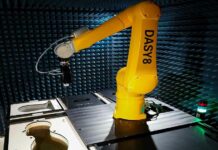CNC devices have been the staple of the machining industry for the last few decades. The term CNC stands for Computer Numerical Control and represents a manufacturing process where specially programmed software controls the operation of various tools and machines. This system offers a number of advantages practically impossible to achieve using manual control, such as streamlined operations and greatly improved precision. It has a variety of uses, one of which is CNC routing.
CNC routers are among the most popular applications of this technology and, as such, should be explained more thoroughly. To understand the subject better, read on and learn how CNC routers work and how beneficial they can be for various sectors.
What Exactly Is A CNC Router?
As the name implies, a CNC router is a device used for routing as well as cutting materials, for surface or in-depth cuts depending on the desired application. It is electronically controlled and can be set to make different cuts with different speeds, depths, and feed rates.
Using such machines to perform various cutting tasks is much more efficient than using a table saw or manual router. This is because they can perform complex operations repetitively within a short timeframe and can make adjustments very quickly without compromising your safety.
CNC routers vary in size, depending on the work they are used for. For example, a small desktop router is sufficient for cutting smaller objects for use in the home, while a larger solution such as a 5×10 CNC router might be used to shape large boards or other flat surfaces for industrial applications.
In terms of costs, the most expensive ones may exceed $150 000, while lower-priced models can be bought for as little as a few thousand dollars. The price range is usually dependent on both the size and capabilities of the CNC router.
What Makes A CNC Router?
Depending on the model, CNC routers consist of multiple different parts, but even the most basic solutions have four essential components. Each computer numerical control router has a cutting bed – an area that supports your chosen material as it’s being cut by the machine. CNC router beds can be made of a variety of materials, from MDF to aluminum, steel, or even phenolic. The cutting element is called a spindle.
The third component is the drive system. These can vary in not only cost but specialized functions such as the elimination of backlash or conversion of the torque to rapid movement speed.
Finally, we have a controller, which is an electronic package responsible for steering the arm and cutting the material to the desired shape.
How Do CNC Routers Operate?
As the name suggests, computer numerical control routers are controlled using a PC of sorts. CNC routers rely on a series of coordinates that are uploaded into the controller from separate software.
Two types of programs are usually used here. Computer-aided design software (CAD) serves to make the initial design of the thing router will be cutting out. Next, a different program is used to translate this CAD file into an M-code or G-code set of instructions – usually in the form of horizontal, vertical, and perpendicular coordinates.
Next, an operator needs to select the speed, depth, and path of the machine tool. The center of the part is determined, and the bit is moved above this starting point. Finally, the operator raises the bit a little and starts the G-code function. Now, the process of cutting has begun.
Which Markets Benefit the Most From CNC Routing?
As mentioned before, computer numerical control solutions offer great safety, efficiency, and precision improvements. Naturally, such substantial advantages made CNC routing an excellent choice for many industries.
Aerospace Sector
The aerospace industry is one of the most demanding users of CNC routers. That is because it encompasses many markets where a single manufacturing mistake could end in a tragedy.
For example, a poorly fitting element of the airliner fuselage could harm the entire plane and put the lives of passengers at risk. A substandard component of a space rocket might result in an explosion and loss of both personnel and cargo.
As such, this industry requires remarkably high tolerances for the manufactured parts. Thanks to the use of CNC routers, this can be achieved with both high repeatability and accuracy.
Automotive Industry
CNC routers are similarly beneficial to the vehicle sector. Manufacturing car parts, such as doors, hoods, or other elements, is not a simple process.
Elements of these components are created from various materials and need to be highly reliable and precisely cut. CNC routers can deliver these qualities in a highly repeatable manner to ensure that none of the cut elements are substandard and increase the risk to safety.
Furniture Industry
CNC machining can be extremely useful in the creation of various furniture pieces. CNC routers are easily capable of delivering high levels of detailing if controlled by a skilled operator. As long as the concept of the piece can be visualized through furniture plans, CNC routers should be capable of recreating it in real life.
This level of detail is greatly beneficial when trying to mass-produce high-end furniture pieces. Complex pieces that would take a carpenter months of backbreaking work can be easily reproduced in days. Because CNC routers are controlled by software, they don’t have issues with imprecision like human workers do, meaning that each complete furniture piece is exactly the same.
Conclusion
CNC routing is an excellent solution for producing a wide range of objects. The process is highly repeatable, precise, and offers excellent flexibility. CNC routers are rather simple to operate, requiring CAD software to create a project and a program to translate the design into a set of coordinates.
This effectiveness, combined with the ease of use, makes CNC routers a good choice for many industries such as aerospace, automotive, and furniture manufacturing. Hopefully, by now, you have a much clearer understanding of how useful these devices are!




























